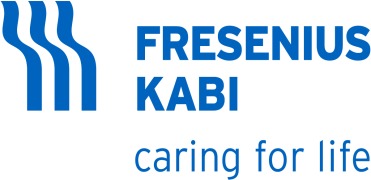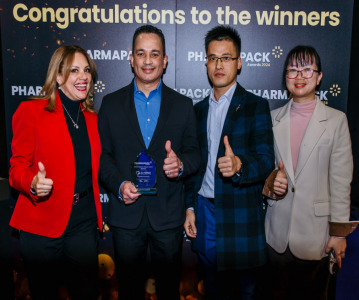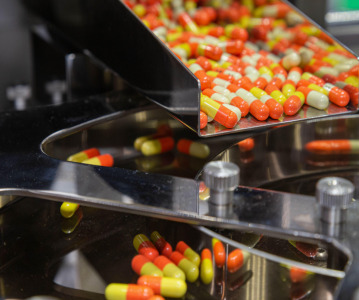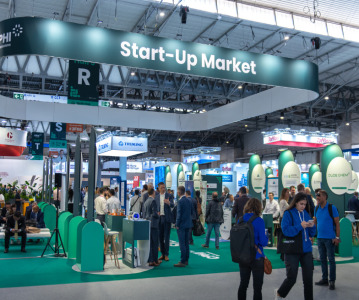MDR – How to collect post-market clinical follow-up data (PMCF): Connect to Frankfurt on-demand
.png)
In this Connect to Frankfurt session, Philipp Annecke, Junior Key Account Manager and Heinrich Martens, VP Regulatory Affairs of Fresenius Kabi (Bad Homburg, Germany) present guidances from the Medical Devices Regulation on clinical data evaluation for medical devices, and how manufacturers can select the right method and strategy for collecting post-market clinical follow-up data (PMCF)
As part of our conference track on Packaging, Drug Delivery & Patient Centricity, this session explores strategies for the collection of post-market clinical follow-up data, and the importance of a robust post-market surveillance and follow-up strategy (PMS).
PMS according to the Medical Devices Regulation
The Medical Devices Regulation (MDR) is a regulation requiring rigorous and detailed evaluation of clinical data for medical devices. This poses a challenge for many in the medical devices industry looking to invest time and costs into development and innovation – what support exists for MDR-compliant technical files for medical devices? Medical devices manufacturers can often be left wondering how to implement a successful MDR project to collect PMCF data.
With an introduction the scope of the session from Annecke, Martens goes on to detail important considerations that must be given to PMS and PMCF data collection.
What is PMS and PMCF?
Martens describes PMS as a proactive and systematic process for deriving necessary corrective and preventive action from information about medical devices already existing on the market. It will become quite clear throughout the session that the operative action is ‘proactive’ - actively collecting data (both proactive and reactive) to remain vigilant in a company’s risk management process.
While a medical device will no doubt be tested throughout the development and manufacturing process to ensure patient safety before it is placed on the market, Martens emphasizes that risks do not end once the item is available for use - certain risks may not reveal themselves until it has been used regularly over time. Martens lists various aims of PMS, including systematically identifying risks in practical use of a product, checking the ‘field’ performance of a product, continuously updating benefit – risk assessments and initiating necessary measures rapidly, and drawing necessary conclusions to determine, implement, and monitor either preventive and/or corrective actions. It is only through a continuous, systematic, and active monitoring of a medical device after it has been placed on market can manufacturers say for certain whether a product offers its promised benefits without uncontrolled risks.
Several device classes/categories exist, and differing frequencies for updates are recommended for each. Though some medical devices may need an annual update, some may be fine with one every 4 years. Either way, Martens emphasizes that PMS is not a one-time event – it must be an ongoing improvement process implemented into a company’s risk management and quality assurance system. PMS can interact with existing internal procedures, Martens reassures, fitting in with clinical evaluation and risk management, though he indicates that it will not be an overnight process. So then how can a PMS/PMCF data collection and management system be implemented?
PMS/PMCF process
Martens demonstrates how a PMS process can be implemented by utilising Fresenius Kabi’s own SOP as an example. Starting with the MDR Clinical Evaluation, consisting of a plan and report adhering to the regulatory body, the process then moves on to a PMS plan, a PMCF plan, and subsequent reports for the data collected from each, before looping back to the MDR Clinical Evaluation. By presenting the plan as a circle of steps and actions to take, Martens reiterates his point for an ongoing process of planning, data collection, evaluation, and analysis, and reporting when it comes to PMS/PMCF data.
As an additional highlight, Martens presents technical documentation on PMS giving guidance on planning and reporting, of which there exist several different documents. With so many different documentations, Martens underscores the importance of having trained individuals familiar with all guidance documents to streamline the planning and reporting process for a company.
Martens also invests a bit of time describing the difference between PMS and PMCF. The clinical aspects are fully emphasized in PMCF data, defining the proactive clinical need for a medical device. Patient need and use are proved in such follow-up studies with statistical rationales. PMS plans offer a broader overview of the market the medical device is on, observing similar devices on the market and gathering market feedback and complaints. A PMS plan may include a PMCF data as part of its process to remain vigilant in its conclusion of the benefit–risk determination.
PMCF according to the MDR
The MDR asserts that the legal manufacturer is responsible for the collection of product data in a proactive manner. Martens reiterates the importance of a proactive approach to clinical data collection. Such measures do not wait for complaints or risks to reveal themselves, but instead systematically collect and review experience gained from devices placed on the market.
So what makes a good, proactive PMCF data collection process?
Martens offers a case study on the collection of PMCF information with a PMCF survey for health care professionals. He runs through the important basic requirements for a survey, including the design of the survey aimed at health care professionals, the determination of appropriate sample sizes, and any data collection and statistical analysis tools that will make PMCF data collection easier and more reliable.
Summary
PMS and PMCF data, as emphasized by Martens, must remain a proactive and ongoing step in a manufacturers process of releasing a medical product to market. While different companies and tools might exist to streamline the data collection, evaluation, and reporting process, it is ultimately up to manufacturers of medical devices to ensure that patient safety continues beyond the clinic and into the market.
Discover more Connect to Frankfurt 2022 on-demand sessions here.

Related News
-
News Pharmapack Awards 2024 Patient-Centric Design Award Winner – Dr Ferrer BioPharma
The 2024 Pharmapack Awards celebrated the best in innovation and design for the pharmaceutical packaging and drug delivery industry on January 24, 2024. -
News Women in Pharma: Minding the Gap at Pharmapack 2024
2024 marks the first year Pharmapack will host a Diversity track dedicated to bridging the gap within the pharmaceutical packaging and drug delivery sector. The track includes a panel discussion on 'Enabling Diversity in the Workplace,' focused... -
News Pharmapack Awards 2024 - Celebrating Packaging and Drug Delivery Innovation
The 2024 Pharmapack Innovation Awards ceremony celebrated the best in pharmaceutical packaging and drug delivery innovation at all levels. The awards were held on January 24, 2024 at the Paris Expo Porte de Versailles. -
News Pharmapack 2024 - From the Floor
Paris once again welcomes Europe’s leading trade show in pharmaceutical packaging and drug delivery innovation. Join our content team as Pharmapack 2024 opens its doors to leading experts and innovators in pharmaceutical packaging and drug delive... -
News CPHI Barcelona 2023: Partnering for Success – Managing Outsourcing Relationships to Optimise Manufacturing Operations
During CPHI Barcelona 2023, insightful content sessions offered attendees the chance to explore trending topics with expert speakers and panellists. Here, we summarise what the pharma industry and supply chain are talking about the most. -
News CPHI Barcelona 2023: Loading Potential – Artificial Intelligence for Pharma Manufacturing
During CPHI Barcelona 2023, insightful content sessions offered attendees the chance to explore trending topics with expert speakers and panellists. Here, we summarise what the pharma industry and supply chain are talking about the most. -
News Pharmaceutical industry supports COP28 health stance in joint statement
As COP28 takes place over this week in Dubai, UAE, several bodies in the pharmaceutical and health industries have come together to announce support of key movements in sustainability in the sector, and to recognise sustainability as a health issue.&nb... -
News CPHI Podcast Series: Start-ups take centre stage at CPHI Barcelona
The first episode of the CPHI Podcast Series since we attended CPHI Barcelona in October covers the Start-up market at the event, with expert Matthew Wise joining Editor Lucy Chard to discuss the event.
Position your company at the heart of the global Pharma industry with a CPHI Online membership
-
Your products and solutions visible to thousands of visitors within the largest Pharma marketplace
-
Generate high-quality, engaged leads for your business, all year round
-
Promote your business as the industry’s thought-leader by hosting your reports, brochures and videos within your profile
-
Your company’s profile boosted at all participating CPHI events
-
An easy-to-use platform with a detailed dashboard showing your leads and performance





.png)

